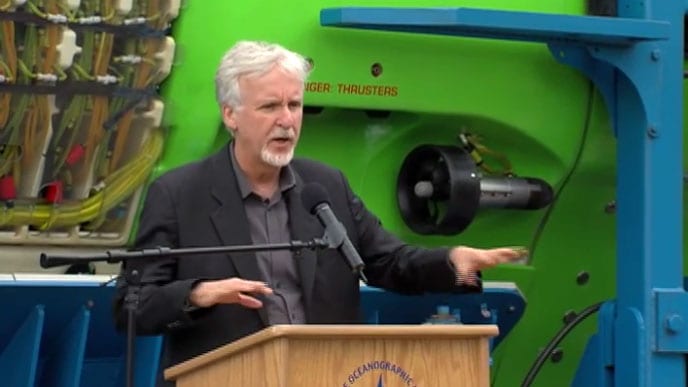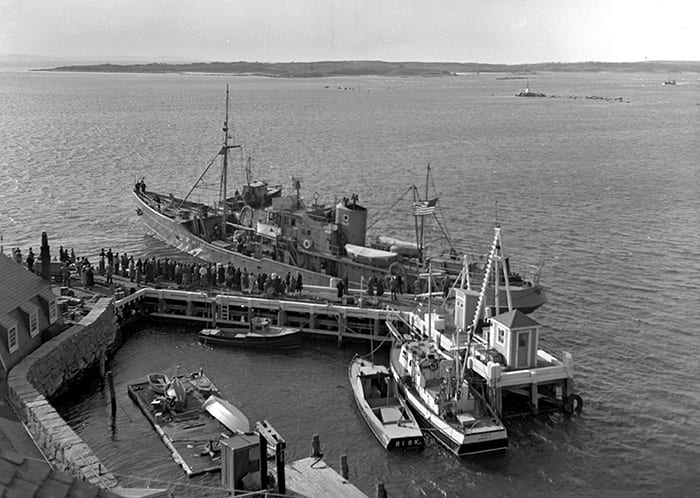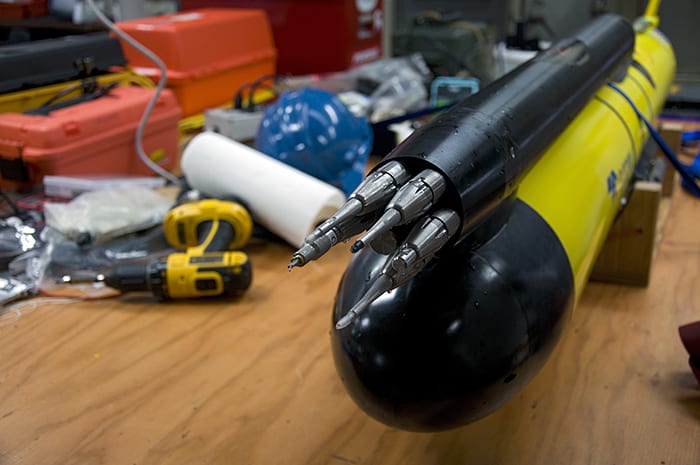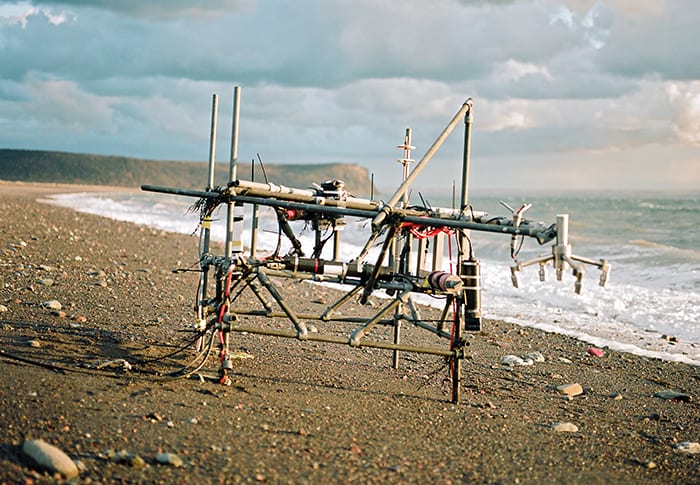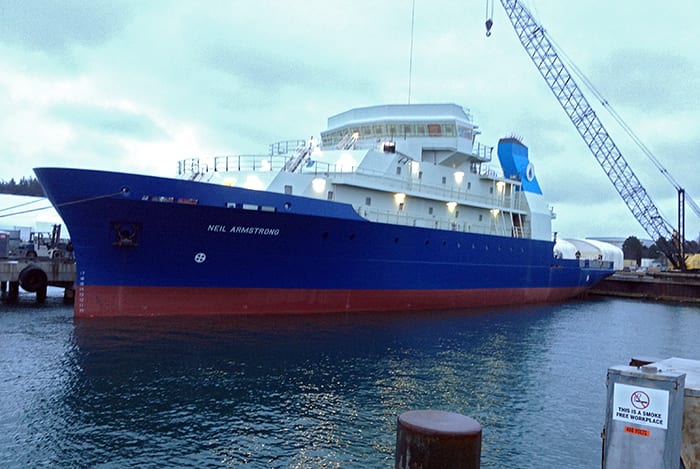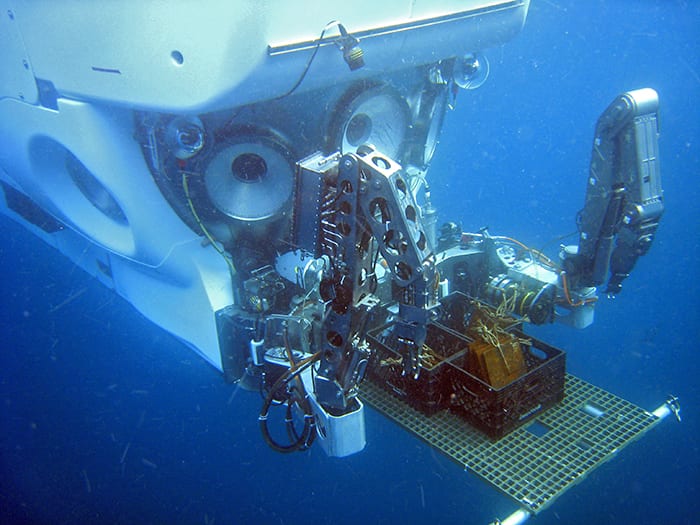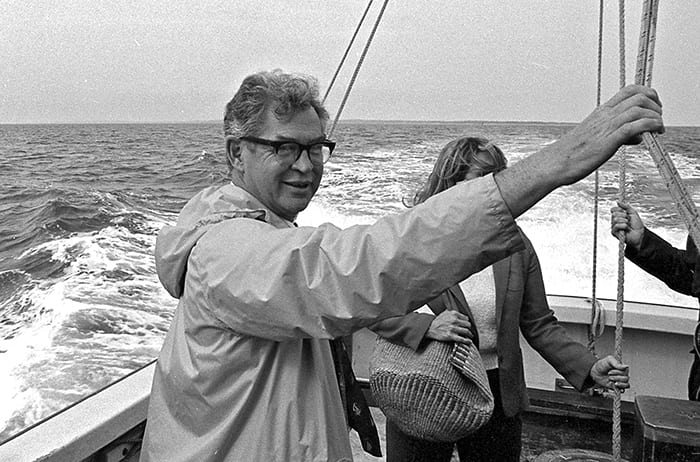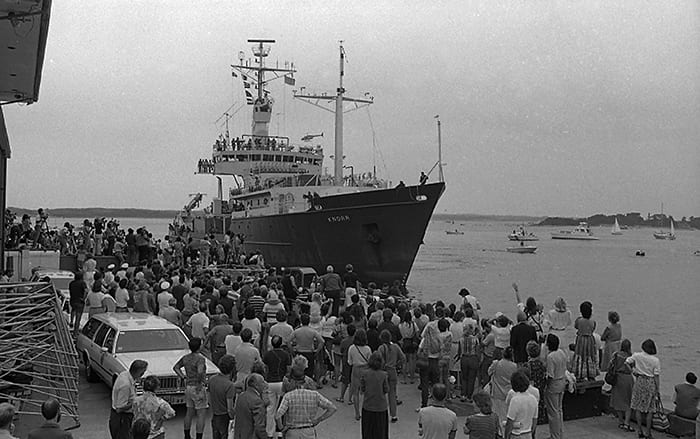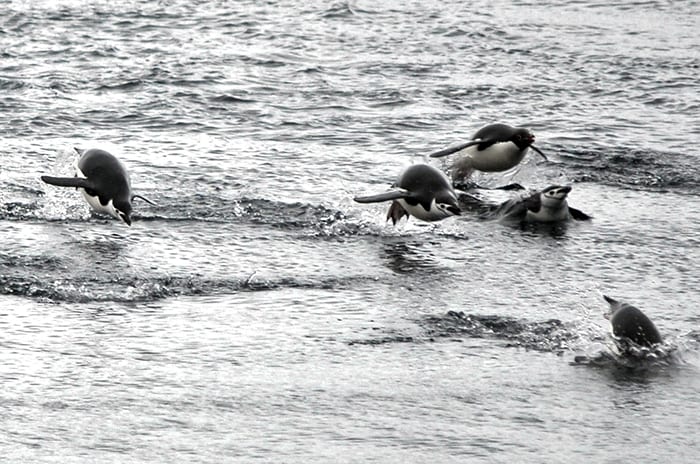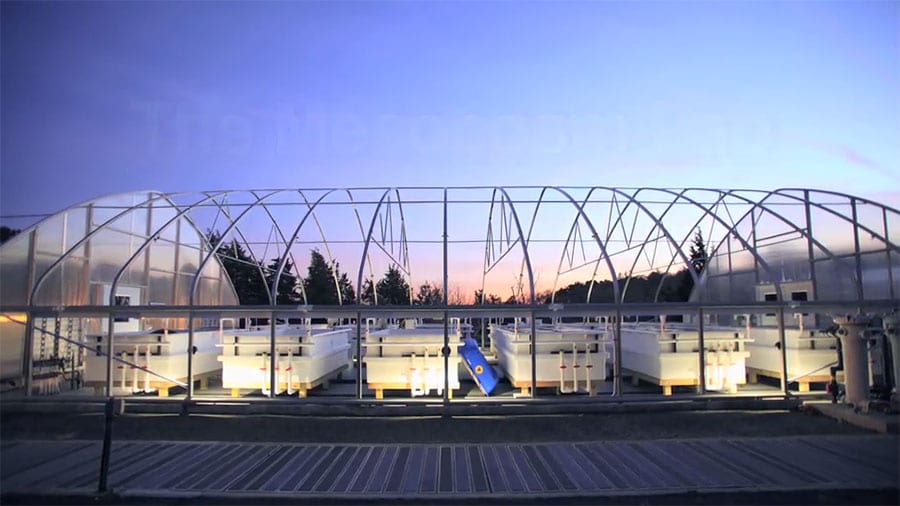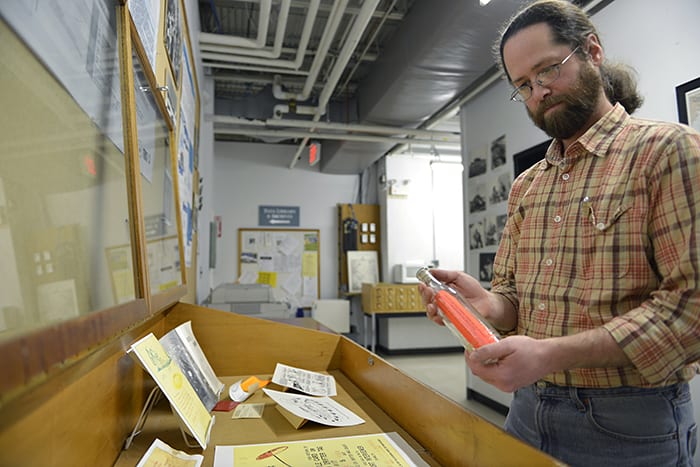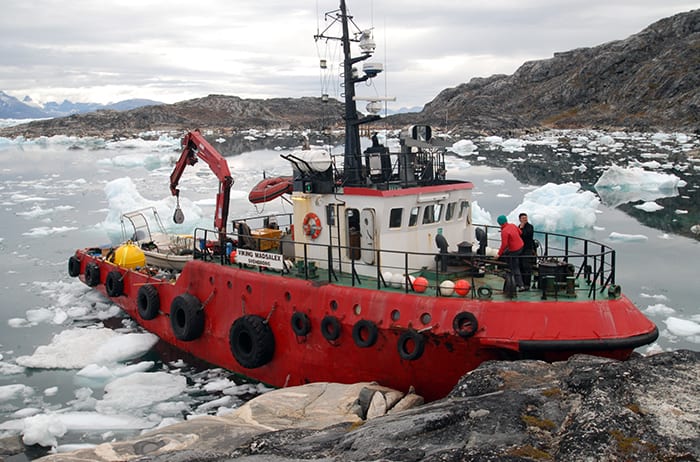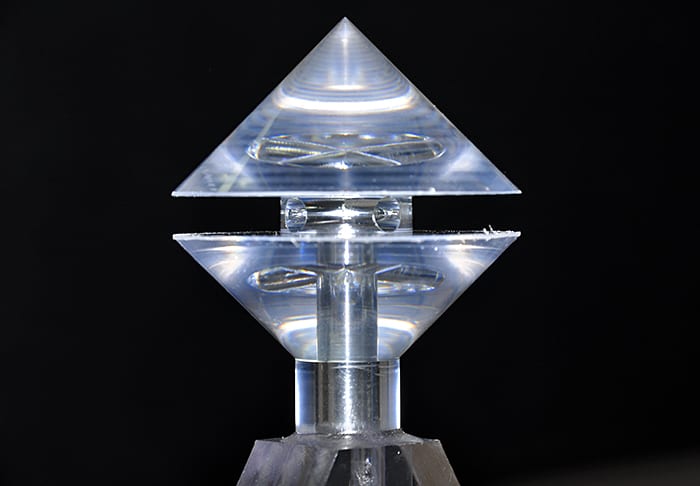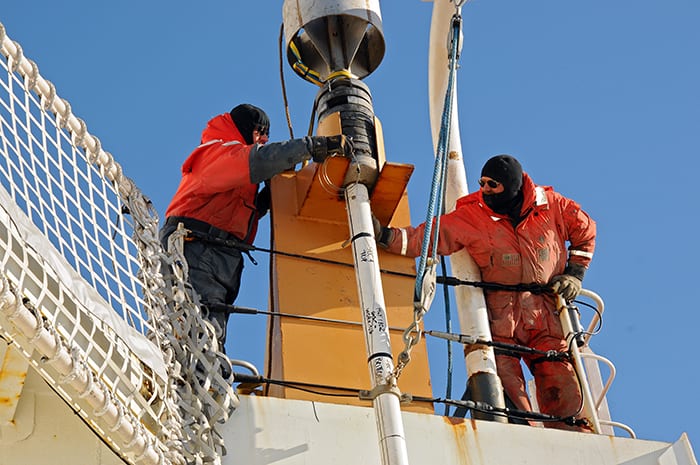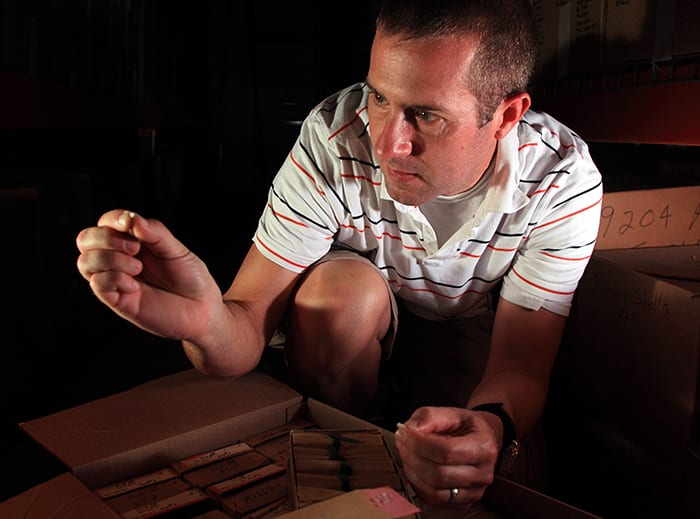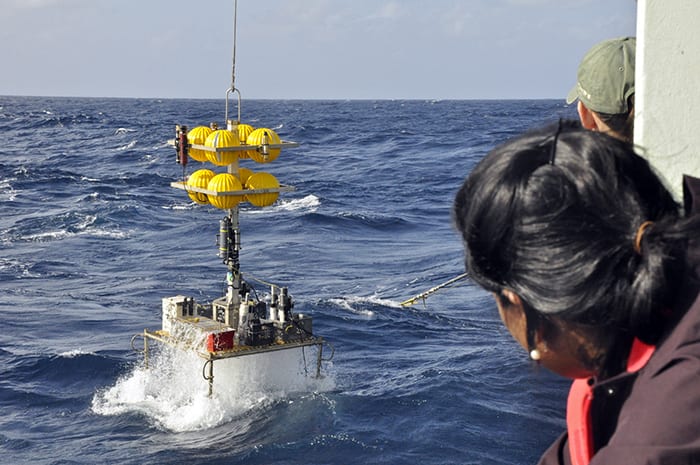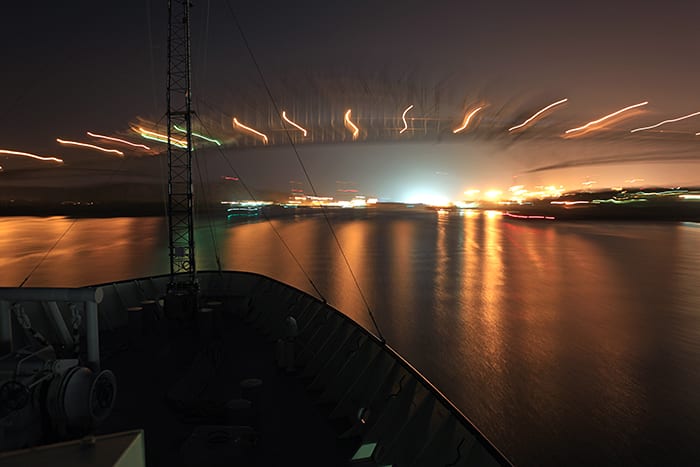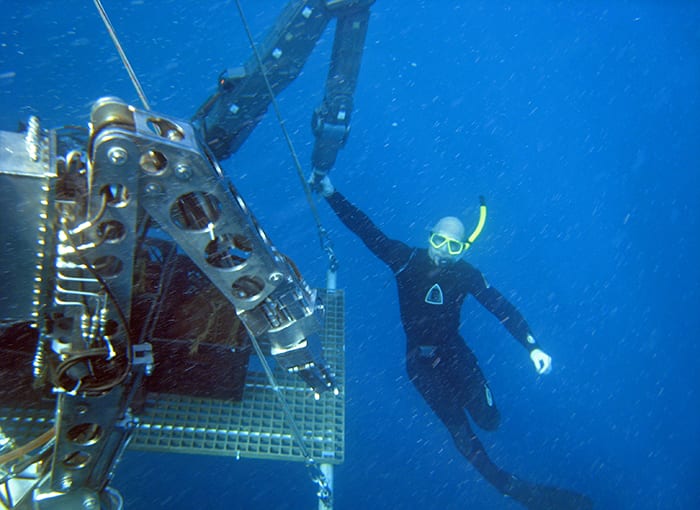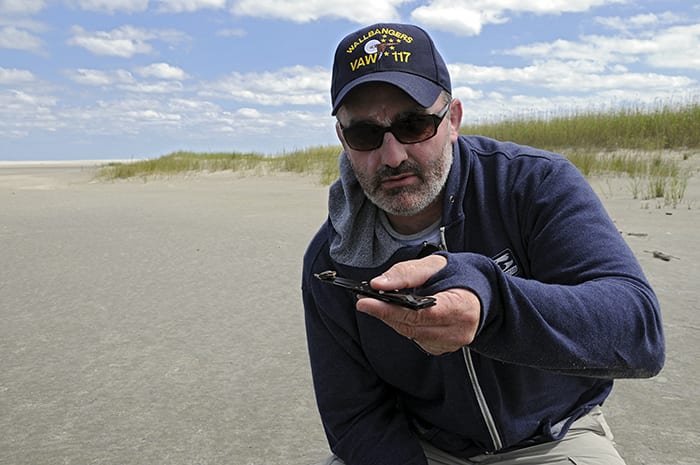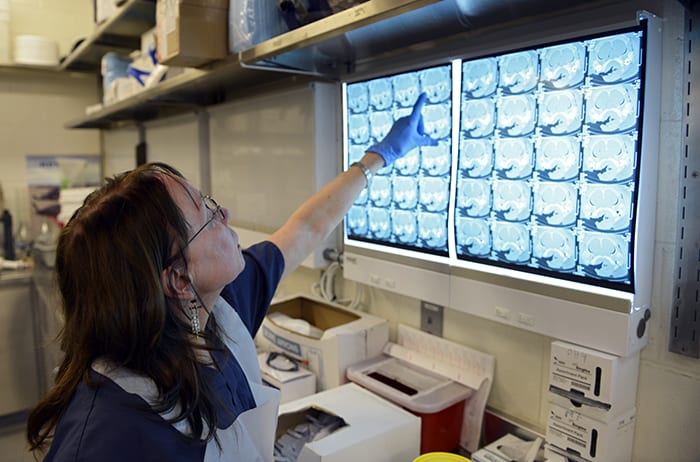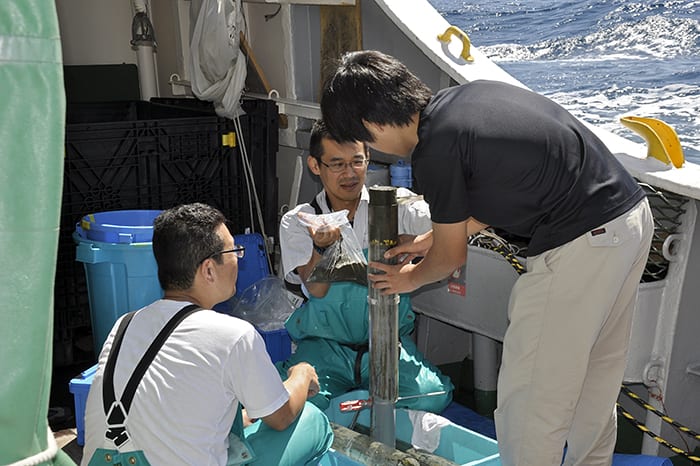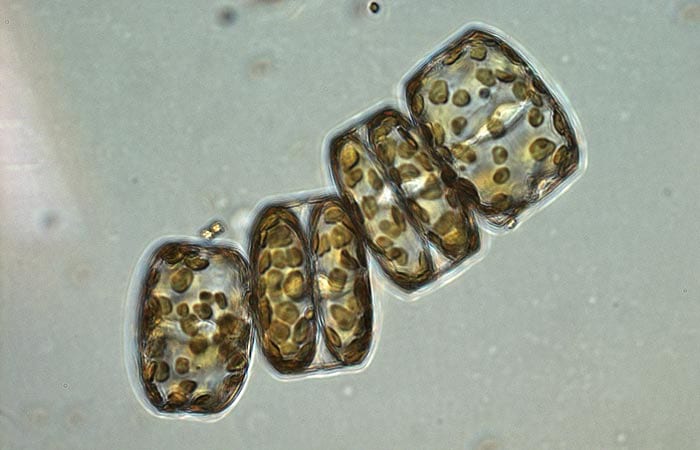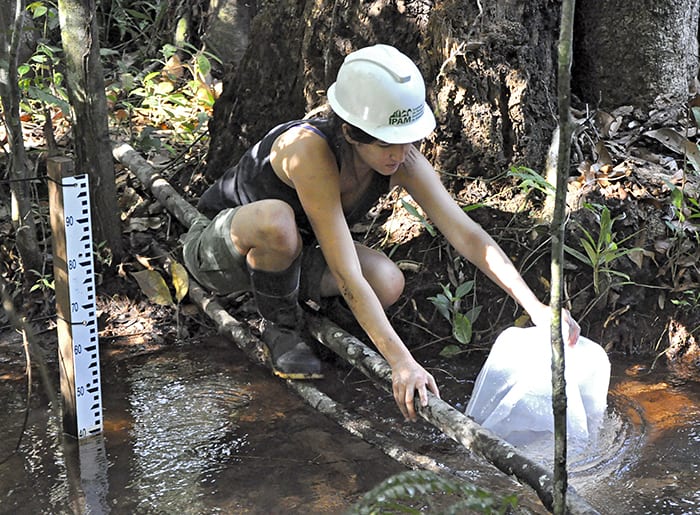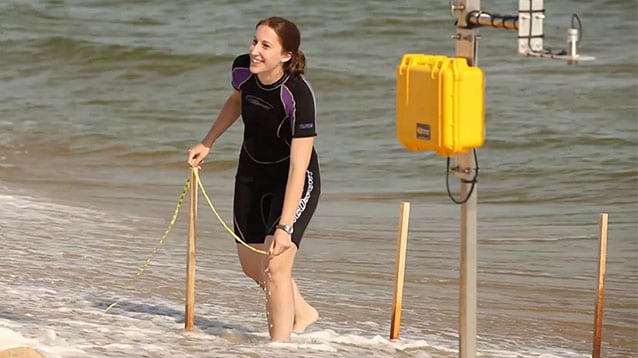Multimedia
Welcome DEEPSEA CHALLENGER (part 4): James Cameron
James Cameron addresses the audience about the DEEPSEA CHALLENGER
Read MoreAlbatross Farewell
Well-wishers gathered on the WHOI dock in 1952 to bid farewell to the 179-foot research vessel Albatross III, which made 128 science cruises in the North Atlantic. After serving as a…
Read MoreCritical Detail
In 2012, a pair of autonomous gliders, each equipped with a MicroRider instrument package, were deployed during the Salinity Processes in the Upper Ocean Regional Study (SPURS) cruise. The expedition…
Read MoreListening to the Tide Roll In
It might look like it just washed ashore, but this instrumented frame is fixed in place on Nova Scotia’s mega-tidal Bay of Fundy for a month at a time to…
Read MoreFirst Time in the Water
The next ship in the UNOLS fleet to be operated by WHOI, the R/V Neil Armstrong, was launched on Saturday, February 22, at the Dakota Creek Industries shipyard in Anacortes,…
Read MoreIn the Basket
To many scientists, one of the most important features on the submersible Alvin is the sub’s sample basket, the stage on the front of the sub that holds instruments being…
Read MoreA Dramatic Demonstration
Intense international focus came to WHOI—and director John Steele—in 1985 after a team of WHOI researchers and French oceanographers discovered the wreck of the Titanic, which sank in 1912 in the North Atlantic.…
Read MoreTitanic Homecoming
Crowds of family members, WHOI staff, and other wellwishers—including hundreds of journalists and 18 film crews—thronged the pier at WHOI in September 1985, as the research vessel Knorr returned from…
Read MoreTaking Flight
Adelie and chinstrap penguins “porpoise” through the water of the Southern Ocean near South Thule Island. Penguins and other animals are uniquely adapted to life in the harsh conditions of…
Read MoreThe Mesocosm Lab
New WHOI experimental facility replicates nature on smaller scales.
Read MoreResearch Relics
WHOI archivist David Sherman holds a bottle like one of the more than 200,000 deployed between 1956 and 1972 to track ocean currents in the North Atlantic. One such bottle,…
Read MoreGlacial Pace
The science crew aboard M/V Viking Madsalex waits in Sermilik Fjord in southeastern Greenland for a helicopter that will take them closer to Helheim Glacier, at the head of the…
Read MorePinpoint Accuracy
WHOI microbiologist Craig Taylor used a lathe to fashion this device out of polycarbonate. It is an inlet port for an underwater instrument called the submersible incubation device. The central…
Read MoreOld, Cold Seafloor
Well-bundled against the cold, WHOI engineer Christopher Griner (left) and guest student Christopher Maio prepare the Giant Gravity Core to sample seafloor sediments near the mouth of the Mackenzie River…
Read MoreTale of the Scales
WHOI biologist Joel Llopiz examines scales of haddock collected on annual surveys by the NOAA National Marine Fisheries Service to assess fish stocks. The scales, dating back to the 1930s,…
Read MoreTop Floor
An “elevator” carrying samples from hydrothermal vents is hoisted from the water as members of the science team aboard R/V Atlantis watch from the rail of the ship. The elevator…
Read MoreJust Passing Through
On recent evening in late January, R/V Atlantis approached the Bridge of the Americas on its way from the Pacific Ocean to the Panama Canal. After a stop in New…
Read MoreGood Dive!
Patrick Neumann, an able-bodied seaman on the research vessel Atlantis, grasps one of the manipulator hands of the submersible Alvin following a successful test dive in the Pacific Ocean. Alvin…
Read MoreDeepwater Detective
WHOI marine chemist Chris Reddy holds a piece of debris found in 2011 on the Chandeleur Islands off the coast of Louisiana. It was one of many that began appearing…
Read MoreRare Look at Rare Whales
Marine biologist Darlene Ketten points to CT scans of a whale head, indicating its earbones. Ketten, an expert on marine mammal hearing and ears, examined the heads of two rarely…
Read MoreSampling Fukushima
Core samples from the seafloor provide Japan Atomic Energy Agency scientist Shigeyoshi Otosaka (left) and his colleagues data for studying the dispersion and sedimentation of radionuclides from the Fukushima nuclear…
Read MoreStressed-out Phytoplankton
They may be microscopic and single-celled, but marine phytoplankton like these Melosira sp. are not immune to the stresses of everyday life. Like us, they require essential nutrients such as…
Read MoreAn Amazonian Task
MIT-WHOI Joint Program graduate student Sarah Rosengard collects a sample from a stream running through the Tanguro ranch, a soy and corn plantation located in the rainforest of Mato Grosso, Brazil. With…
Read MoreFrom Lab to Sea
What’s it like to go to sea and conduct oceanographic research? A recent grant helps graduate students find out.
Read More
